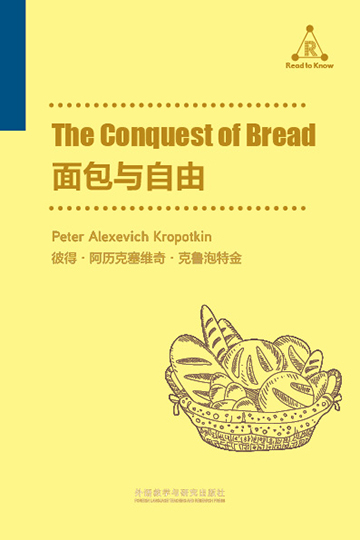本书从政治、经济的角度,批判了现实社会制度,对代议制、法律、强权等,进行了分析与抨击。
《面包与自由》是一本无政府共产主义的理论宣言和政治经济学名著。克鲁泡特金认为,大自然留给人类的财富和人类通过集体劳动所创造出来的机器,足以使一切人得到所需要的面包;如果废除私有制,实行共产共有,经济平等,便可保证一切人过上安居乐业的生活。本书是对克鲁泡特金全部社会思想的概括。“面包”是指一切人的面包,“自由”是指克鲁泡特金所主张的在无政府社会中人们在政治上的一切自由。
In this work, Kropotkin points out what he considers to be the defects of the economic systems of feudalism and capitalism, and how he believes they thrive on and maintain poverty and scarcity, as symbol for richness and in spite of being in a time of abundance thanks to technology, while promoting privilege.
- 第一章 我们的财富
- 第二章 全民幸福
- 第三章 无政府共产主义
- 第四章 充公
- 第五章 食物
- 第六章 住房
- 第七章 衣服
- 第八章 生产方式和手段
- 第九章 对奢侈品的需求
- 第十章 愉快的劳动
- 第十一章 自由协议
- 第十二章 反对观点
- 第十三章 集体主义者的工资制
- 第十四章 消费与生产
- 第十五章 劳动分工
- 第十六章 工业的分散
- 第十七章 农业
- CHAPTER I OUR RICHES
- CHAPTER II WELL-BEING FOR ALL
- CHAPTER III ANARCHIST COMMUNISM
- CHAPTER IV EXPROPRIATION
- CHAPTER V FOOD
- CHAPTER VI DWELLINGS
- CHAPTER VII CLOTHING
- CHAPTER VIII WAYS AND MEANS
- CHAPTER IX THE NEED FOR LUXURY
- CHAPTER X AGREEABLE WORK
- CHAPTER XI FREE AGREEMENT
- CHAPTER XII OBJECTIONS
- CHAPTER XIII THE COLLECTIVIST WAGES SYSTEM
- CHAPTER XIV CONSUMPTION AND PRODUCTION
- CHAPTER XV THE DIVISION OF LABOUR
- CHAPTER XVI THE DECENTRALIZATION OF INDUSTRY
- CHAPTER XVII AGRICULTURE
- 书评 写书评
- 笔记
-
书评加载中...






















 京公网安备 11010802032529号
京公网安备 11010802032529号
笔记加载中...